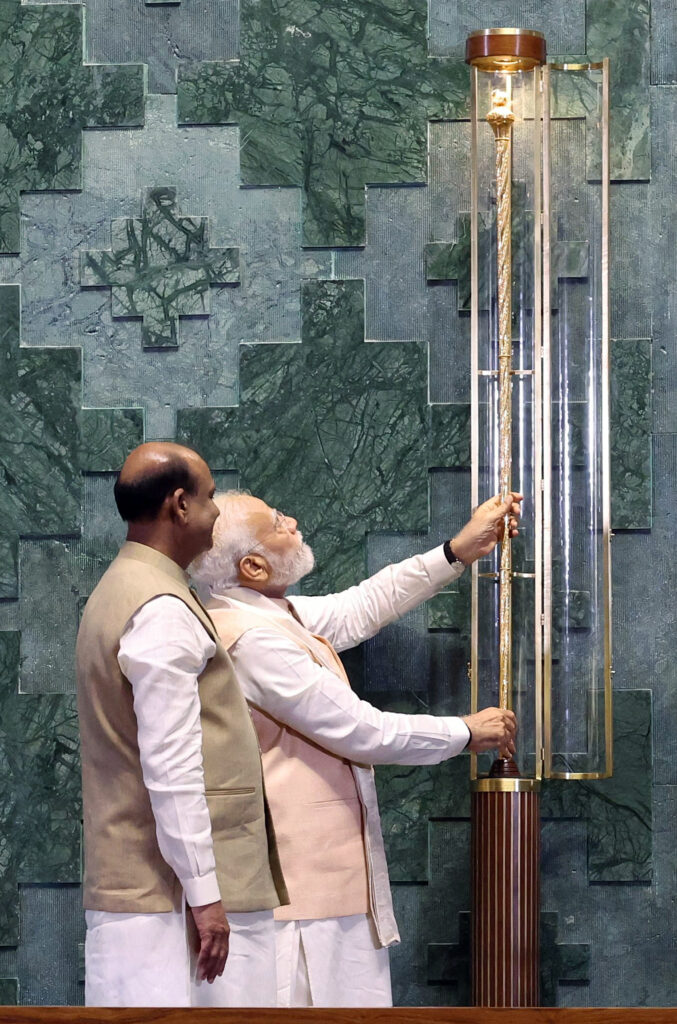From Ancient Kingdoms to Modern Politics: The Sengol’s Journey in India’s New Parliament
In a historic moment that echoes the grandeur of ancient South Indian kingdoms, the ‘Sengol’ takes center stage in India’s new Parliament building. Prime Minister Narendra Modi, with reverence and pride, installed the Sengol today, positioning it next to the Lok Sabha Speaker’s seat. Let’s delve into the significance and symbolism behind this remarkable sceptre that embodies power, authority, and the spirit of independence.

The Sengol, a term derived from the Tamil word ‘Semmai,’ meaning ‘righteousness,’ holds a deep-rooted historical significance. It has a rich legacy that dates back to the transfer of power from the British to the Indians in 1947. Originally bestowed upon India’s first Prime Minister, Jawaharlal Nehru, the Sengol became a powerful symbol of the nation’s newfound independence and sovereignty.
This sceptre carries the weight of tradition and heritage, harking back to the glorious era of ancient South Indian kingdoms. It stands as a testament to the regality and might of those who wielded it, representing the authoritative voice of the people.
With its installation in the new Parliament building, the Sengol assumes a position of utmost prominence and respect. It stands as a visual reminder of the power vested in the hands of the elected representatives who gather within those hallowed walls.
More than just an ornamental artifact, the Sengol encapsulates the ideals of righteousness and justice. It serves as a beacon, guiding lawmakers to make decisions that align with the aspirations and welfare of the nation’s citizens.
As the Sengol finds its place beside the Lok Sabha Speaker’s seat, it symbolizes the seamless transition of power from colonial rule to self-governance. It stands tall as a constant reminder of the arduous journey India has undertaken to secure its independence and the ongoing commitment to uphold the democratic principles that shape the nation.
The installation of the Sengol in the new Parliament building represents a powerful gesture—a union of tradition and modernity, the blending of history and progress. It serves as a poignant reminder of India’s vibrant cultural heritage while embracing the aspirations of a dynamic, forward-thinking nation.
As India’s leaders convene within the chambers of the new Parliament, the Sengol stands as a silent sentinel, reminding them of their responsibility to uphold the values of righteousness, justice, and the collective voice of the people they represent.
The Sengol, with its aura of authority and symbolism, embodies the spirit of a nation that has risen above the shackles of colonialism to embrace its own destiny. It signifies not only the transfer of power but also the enduring strength and resilience of a people united in their pursuit of progress, equality, and a better tomorrow.
The next time you witness the Sengol’s presence in India’s Parliament, remember the stories it tells, the ideals it represents, and the indomitable spirit it carries—a true emblem of power, authority, and the unwavering pursuit of righteousness.








